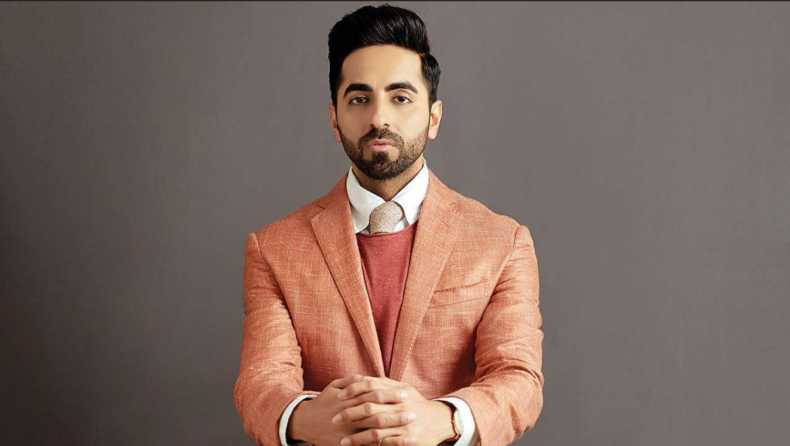Bollywood’s mediocrity allowed space for Ayushmann Khurrana’s unconventional that fit perfectly in the conventional narrative
Ayushmann Khurrana has made his name in Indian cinema not only due to his, admittedly, distinct acting performances or the range of his roles but also, mainly, as a result of the “unconventional” topics his films address. While the audience sees an actor that does not conform to societal norms, Khurrana is an actor who has formed his unique brand in film, something that adheres to society so perfectly, that it is difficult to pinpoint.

To critique the actor who gives life to the characters, we must assess the filmmaker that creates said character. Anubhav Sinha is the creator of the two films, Article 15 and Anek intent on representing topics, caste and regional identities, that usually don’t find their way in mainstream media. However, in the process of delving away from said mainstream, he has created his personal brand of films in which Ayushmann Khurrana’s character is perpetually the hero.
Brahmin Saviour in Article 15
For instance, Article 15, in which Sinha picks a topic such as casteism in India, highlights the gruesome acts of violence that are a result of the divisive caste system and then goes on to give the perspective of the perpetrator of the caste system, the upper caste. The film, by having a Brahmin male hero fighting against caste atrocities, takes the genuine position of the people from lower castes who have been struggling in this fight for the longest time.
The Dalit activist the film introduces in brief moments played a significant role in the movement, and yet the filmmakers didn’t take his perspective as a better narrative of the incident than the Brahmin policeman’s. The film took a story of the Dalits from them and handed it to the Brahmin man while simultaneously romanticising the police and their role in the annihilation of caste atrocities when in reality, they have either ignored the incidents or helped in covering them or taken part in them.
It is easier to shift the focus of Dalit experiences away from Dalit people themselves and onto the Brahmin to oblige to their upper-caste saviour agenda. This film tries to make its upper-caste audience comfortable by narrating Dalit experiences from the perspective of a Brahmin who holds a position in society that invariably places Dalit people in a marginalised position. It makes it easier for the filmmakers and consequently the audience to shift the focus from the issues of caste that it aims to address onto this skewed Savarna heroism.
While a vast majority of the critical reviews of this film glorify the use of a Brahmin as a protagonist as a means to make the general audience aware of their caste privilege, it comes off as regressive and harmful. By portraying a Brahmin protagonist who is “willing to share” utensils with lower caste people and having lower caste people refuse to do so instead, the film conveniently puts the onus of the casteist practice on lower caste people and not the upper caste people who force and lynch lower caste people who do not follow the Brahmanical rules.
Often while critical reviews describe this film as “controversial” and “revolutionary”, it is essential to note what they associate with these terms. Tagged along with these terms is that Anubhav Sinha has been dealt with legal notices, death threats and protests, namely by the Karni Sena as a response to Article 15’s trailer. Sinha’s statement to these threats roughly translates to “Trust me, this movie has not disrespected any Brahmin community? In fact, you will be happy to know that there were a lot of Brahmins involved in the making of this film, both friends and artists. There is no reason to disrespect the Brahmin community.” It is not surprising to then see these retaliations die down after the film’s release since the film seems to serve its purpose as an apologia for the upper-caste audience and their caste pride and blindness.
Portraying caste blindness in Article 15 and assuming a position of a saviour without a true cause in Anek, Ayushmann Khurrana’s roles have consistently fit in the category of playing the saviour for minorities.
Saviour from “insurgents” in Anek

In the film, Anek, the characters Joshua/Aman (Ayushmann Khurrana), Abrar (Manoj Pahwa), and Ajay (JD Chakravarthy) are all busy saving India from the ‘insurgents’ in the Northeast. They all suffer from a severe saviour complex wherein the sentiment of “saving the nation” urges them to lay down their lives, conveniently with the power of the security apparatus and government associated with them.
However, the more the audience sorts through all the “intense” talk and declarations of peace and accord, sprinkled with control and violence, the more the plot of the film becomes apparent. Someone arrogant, superior and patronising (in this case Ayushmann Khurrana), outside the Northeast, has taken on the responsibility to save the country and the people.
Rather than pioneering a way for more films to represent lower caste people and the Northeast, Article 15 and Article 15 take over the voice of the region and its people and their experiences by providing an outsider’s perspective. Observing the pattern of Ayushmann Khurrana’s roles has taken on, most of which have been his relatively more popular performances, his brand of playing the saviour to minorities has been rather firmly established.












